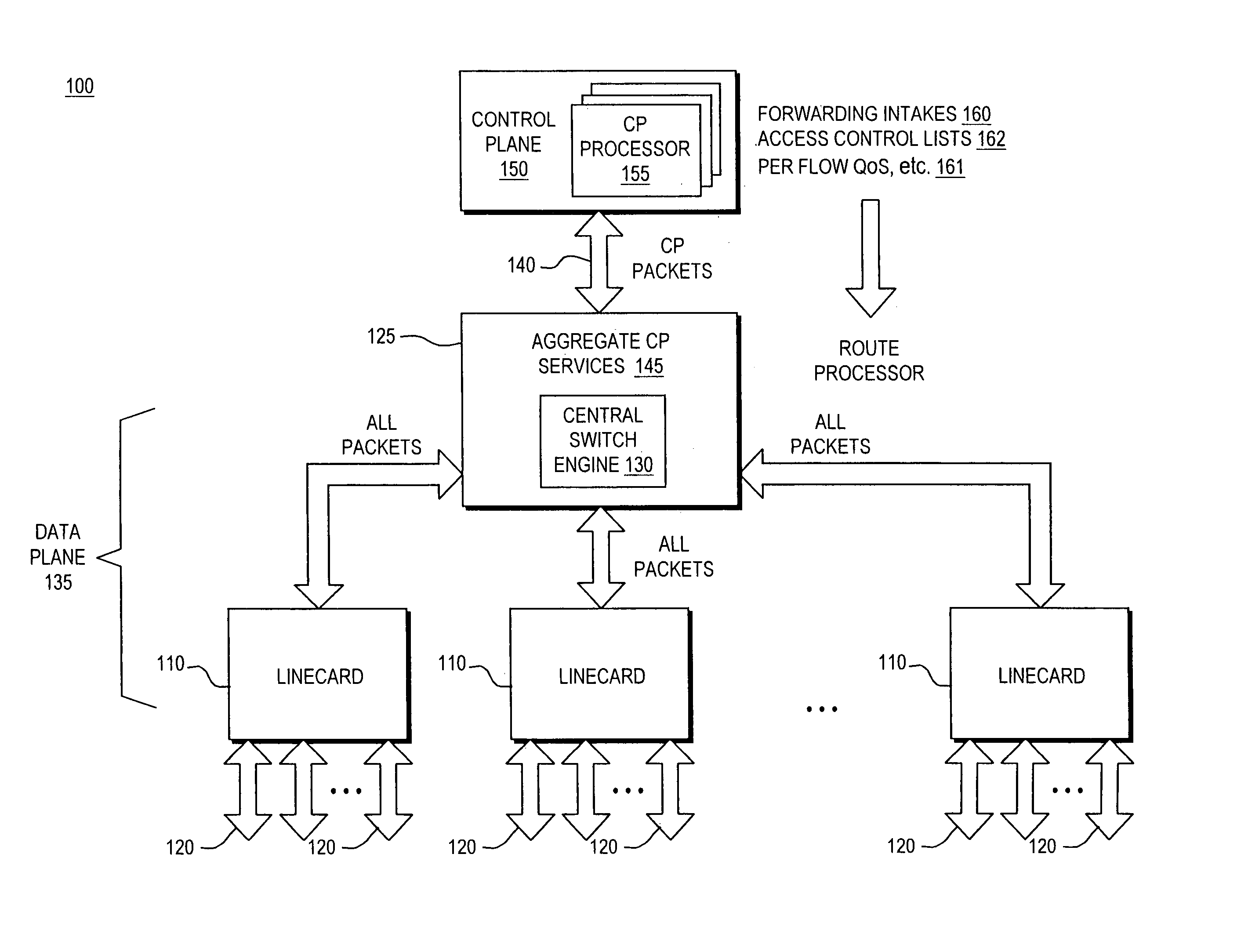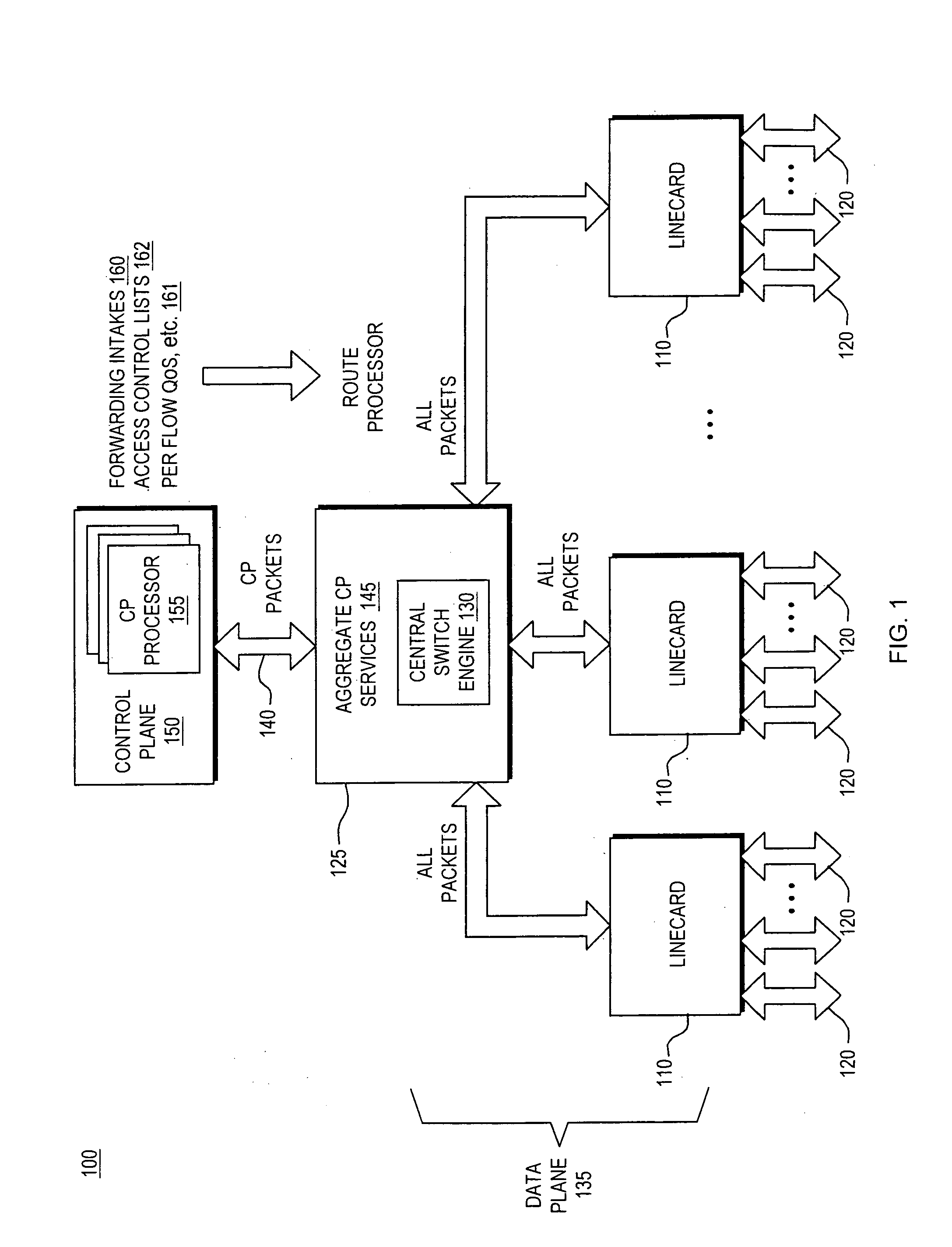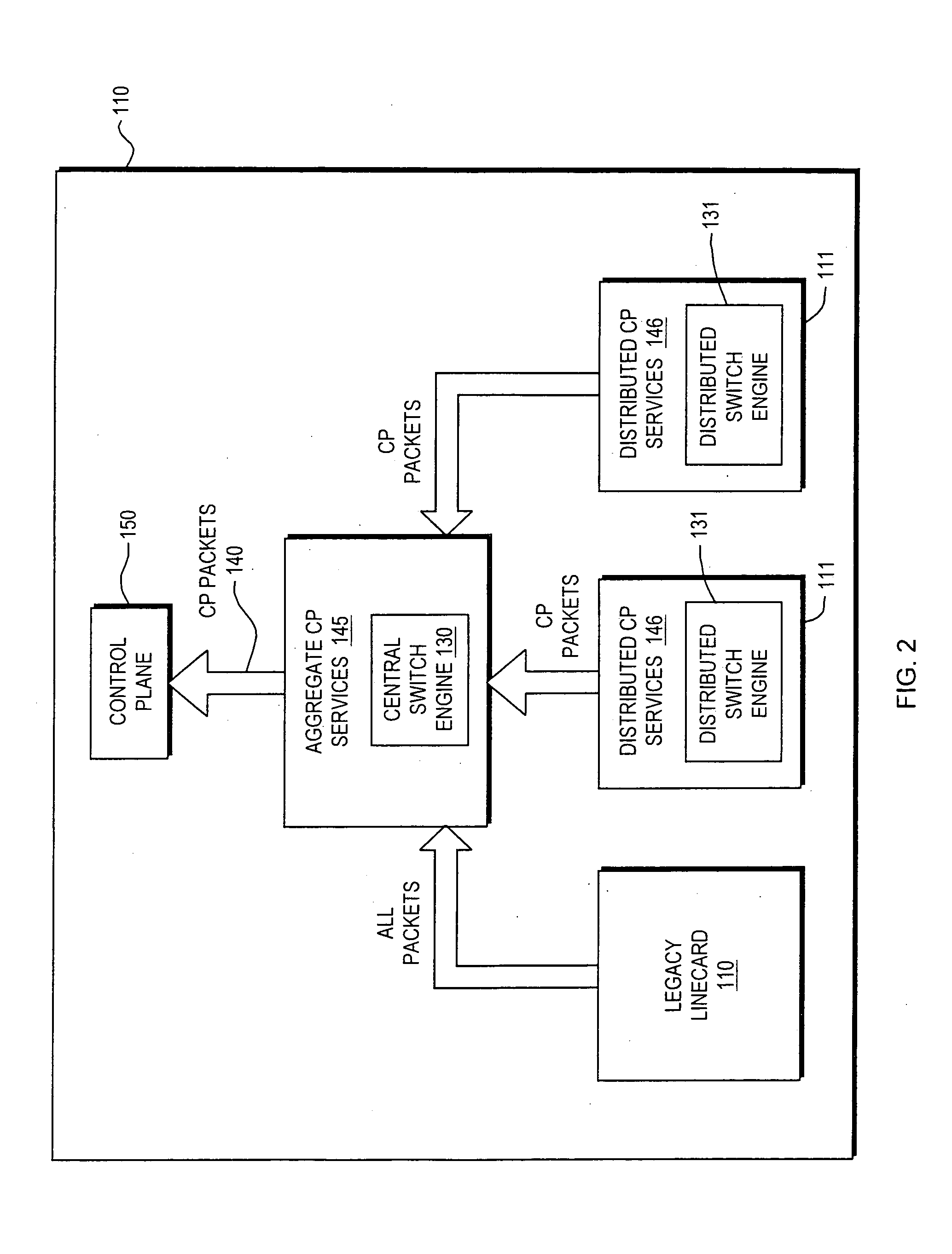Control plane security and traffic flow management
a technology of security and traffic flow, applied in the field of control plane security and traffic flow management, to achieve the effect of improving immunity and improving service quality
- Summary
- Abstract
- Description
- Claims
- Application Information
AI Technical Summary
Benefits of technology
Problems solved by technology
Method used
Image
Examples
Embodiment Construction
[0038]A description of preferred embodiments of the invention follows.
[0039]FIG. 1 is a block diagram of a typical internetworking device 100 such as a router, bridge, switch, server or the like in which the invention may be implemented. Such an internetworking device 100 consists of a number of functional entities. These include line cards 110 that are responsible for physically attaching to network connections such as ports 120. Each of the line cards 110, typically provide a number of ports 120, such as through Network Interface Adaptors. Packets received from the ports 120 are fed to a route processor 125. In the case where the device 100 is a router or switch, the processor 125 includes a central switch engine 130. A control plane 150 associated with the device 100 is defined as a collection of processes, typically running on the route processor 125. These control plane 150 processes collectively provide high level control for most router / switch Input / Output Services (IOS) func...
PUM
 Login to View More
Login to View More Abstract
Description
Claims
Application Information
 Login to View More
Login to View More - R&D
- Intellectual Property
- Life Sciences
- Materials
- Tech Scout
- Unparalleled Data Quality
- Higher Quality Content
- 60% Fewer Hallucinations
Browse by: Latest US Patents, China's latest patents, Technical Efficacy Thesaurus, Application Domain, Technology Topic, Popular Technical Reports.
© 2025 PatSnap. All rights reserved.Legal|Privacy policy|Modern Slavery Act Transparency Statement|Sitemap|About US| Contact US: help@patsnap.com



